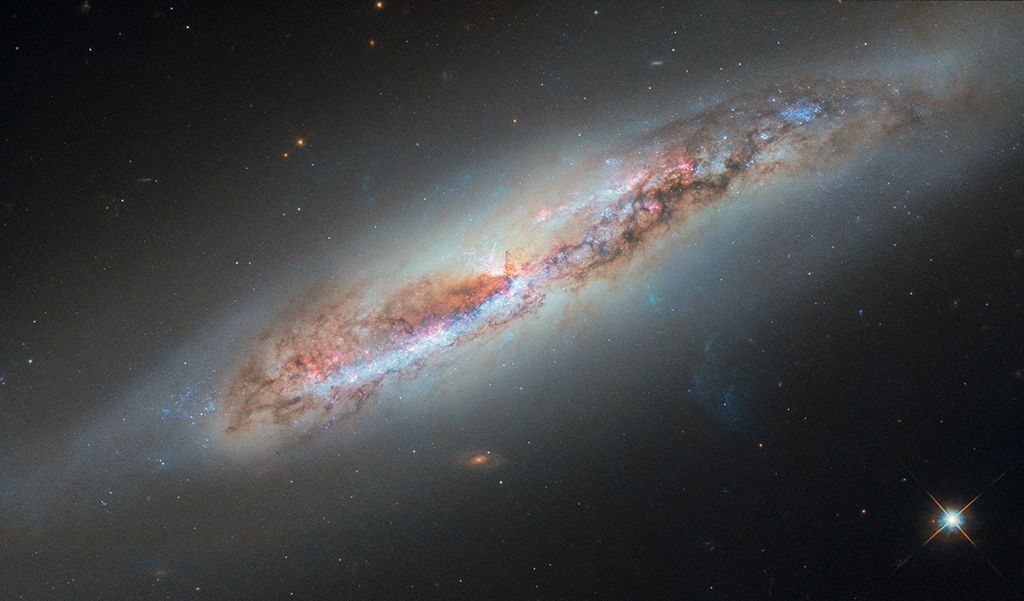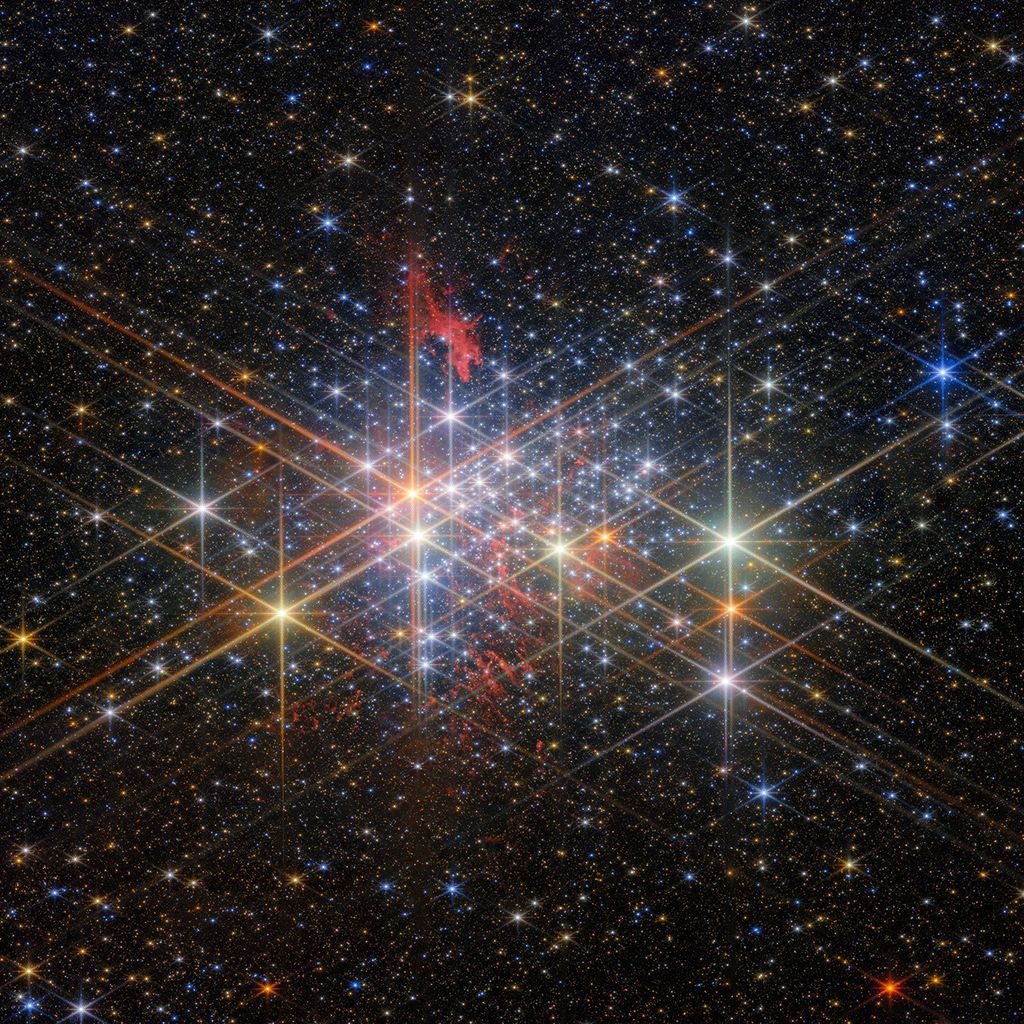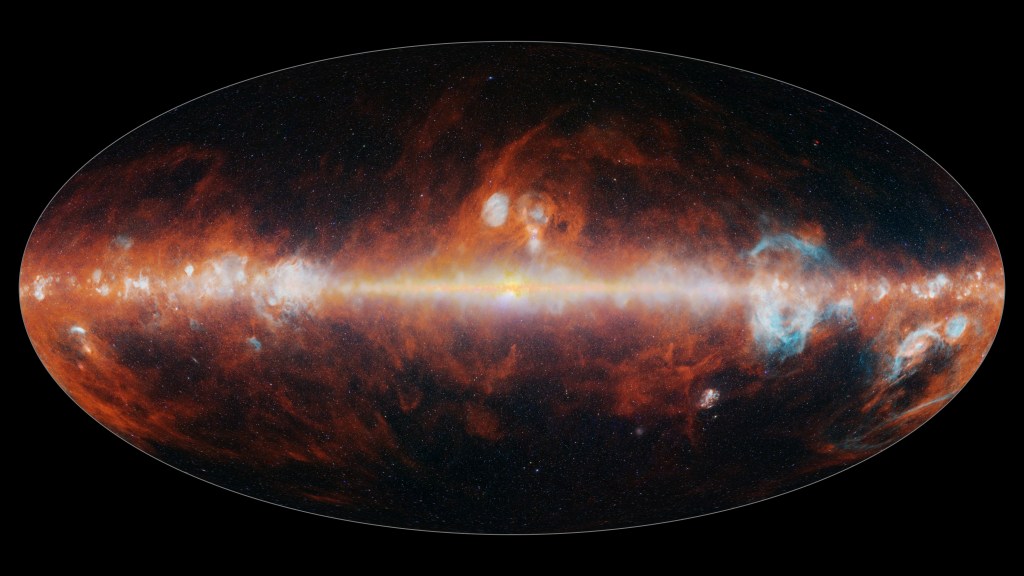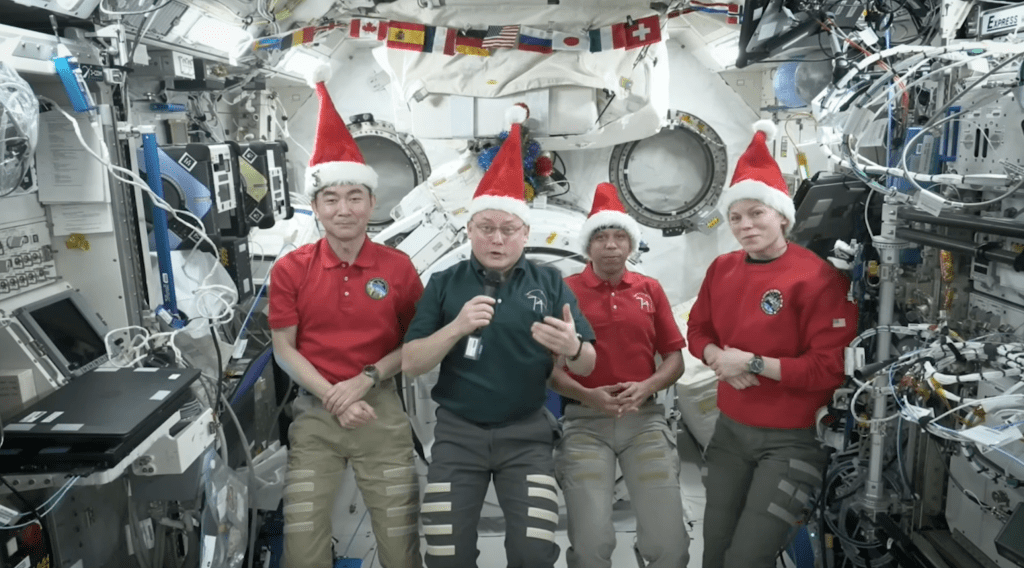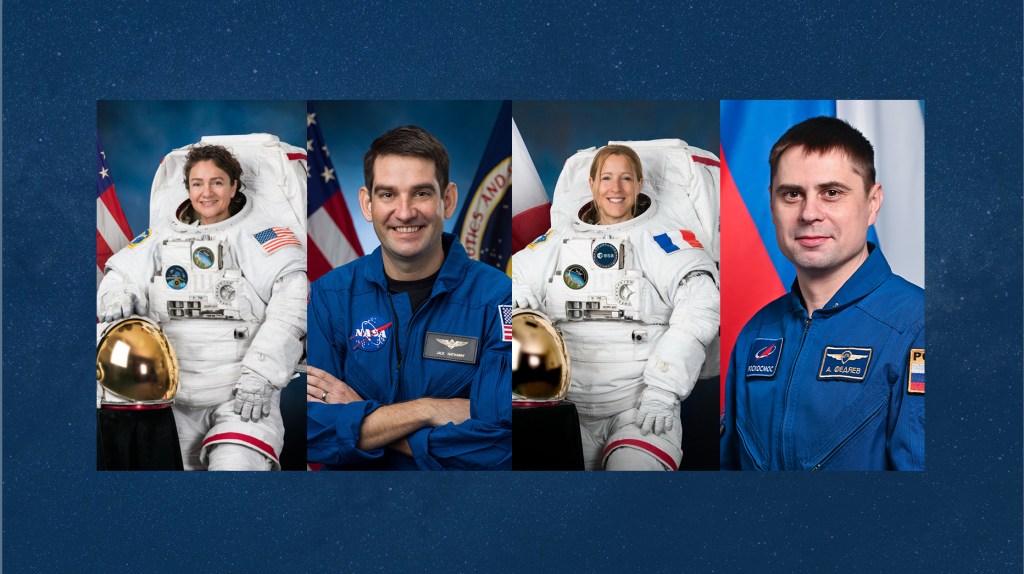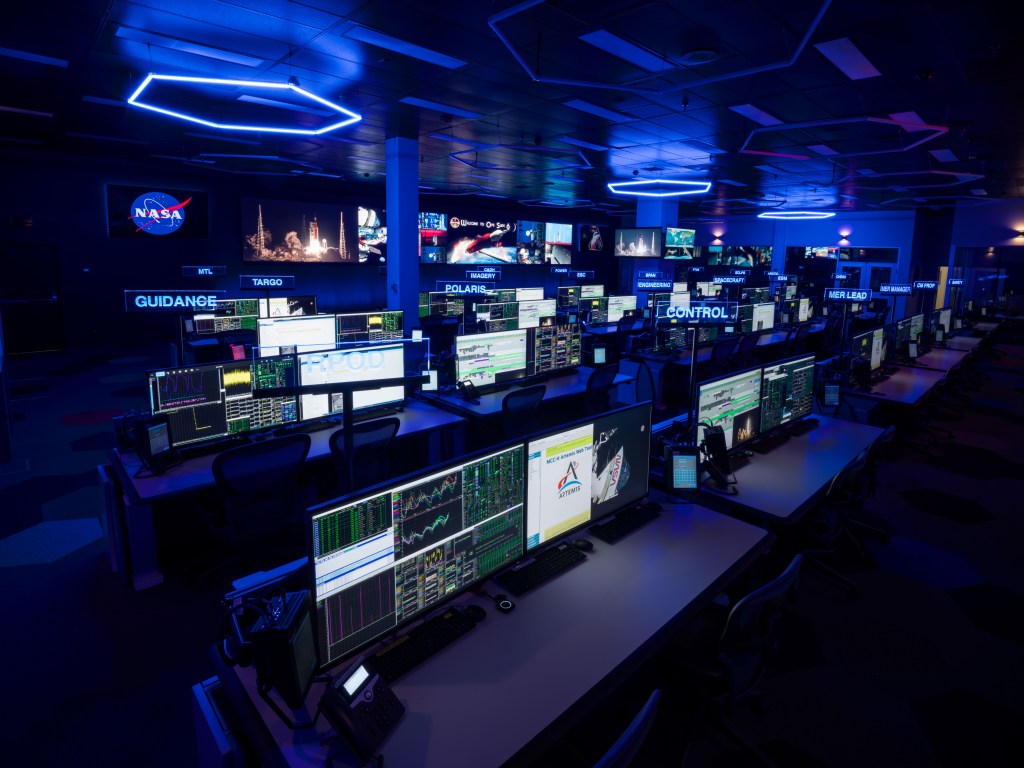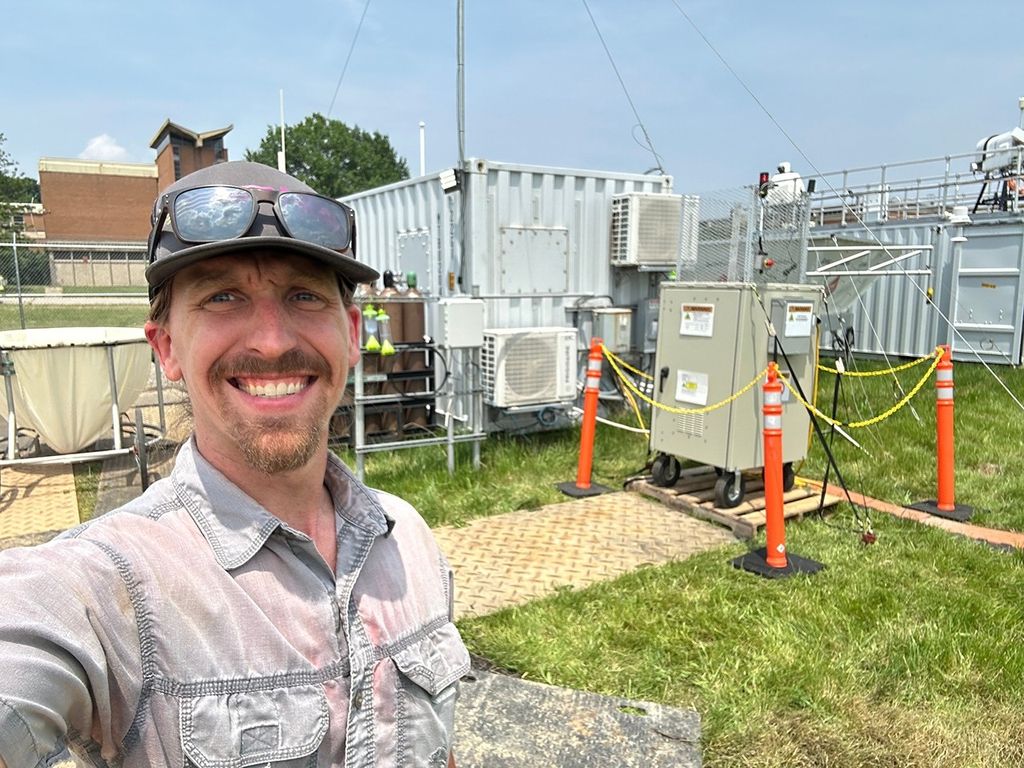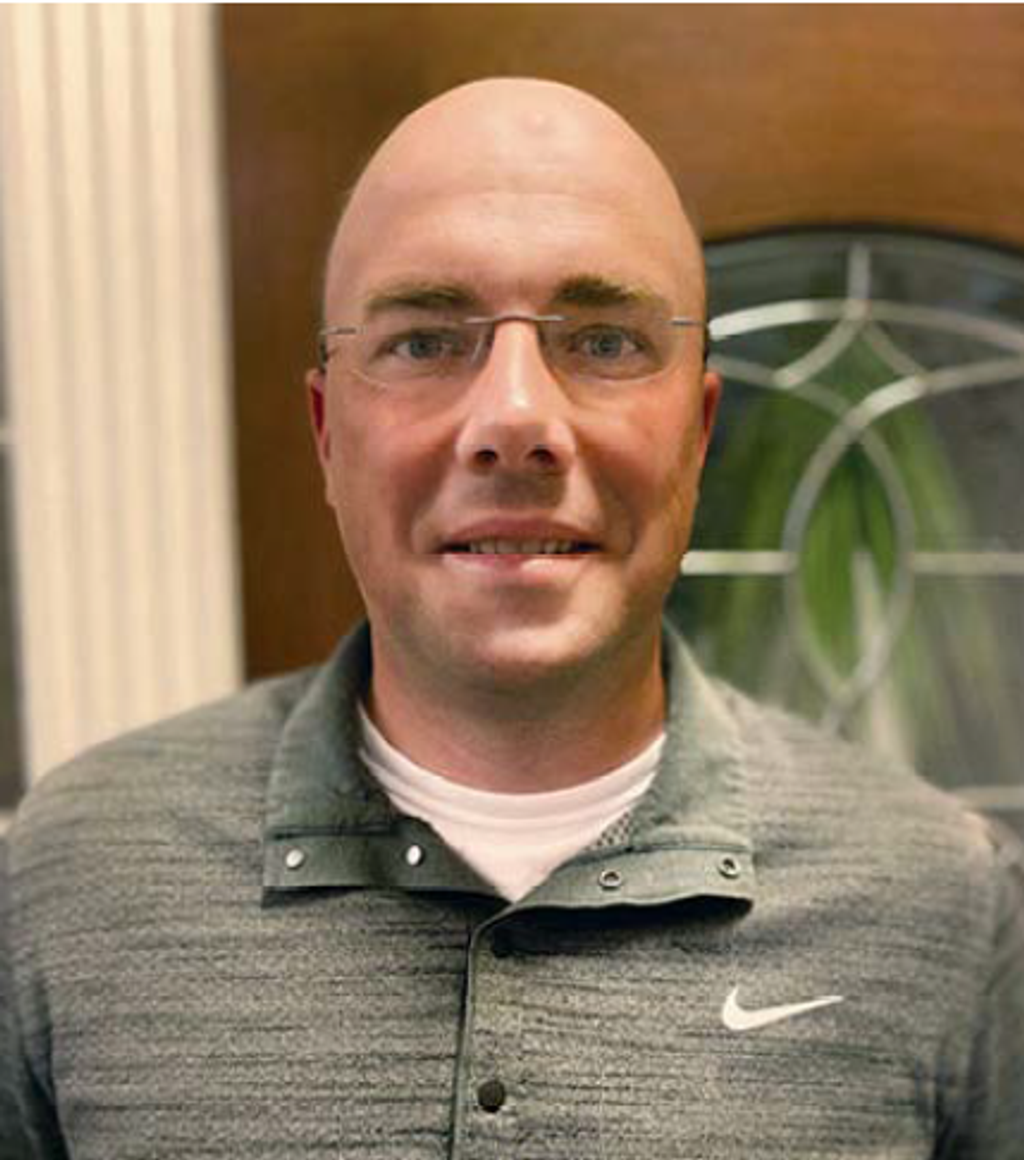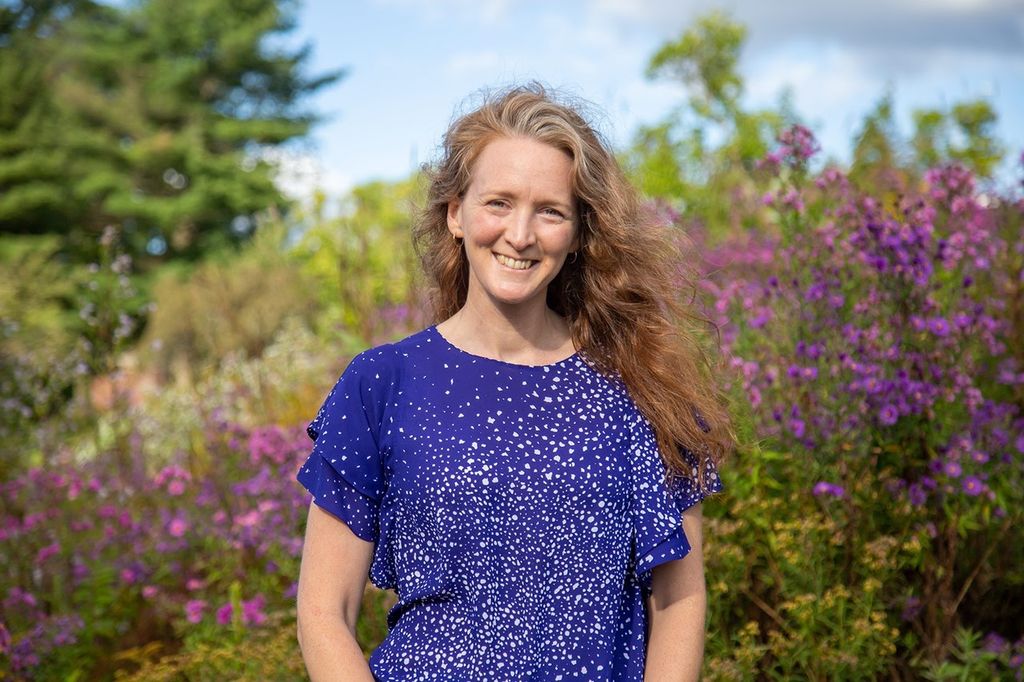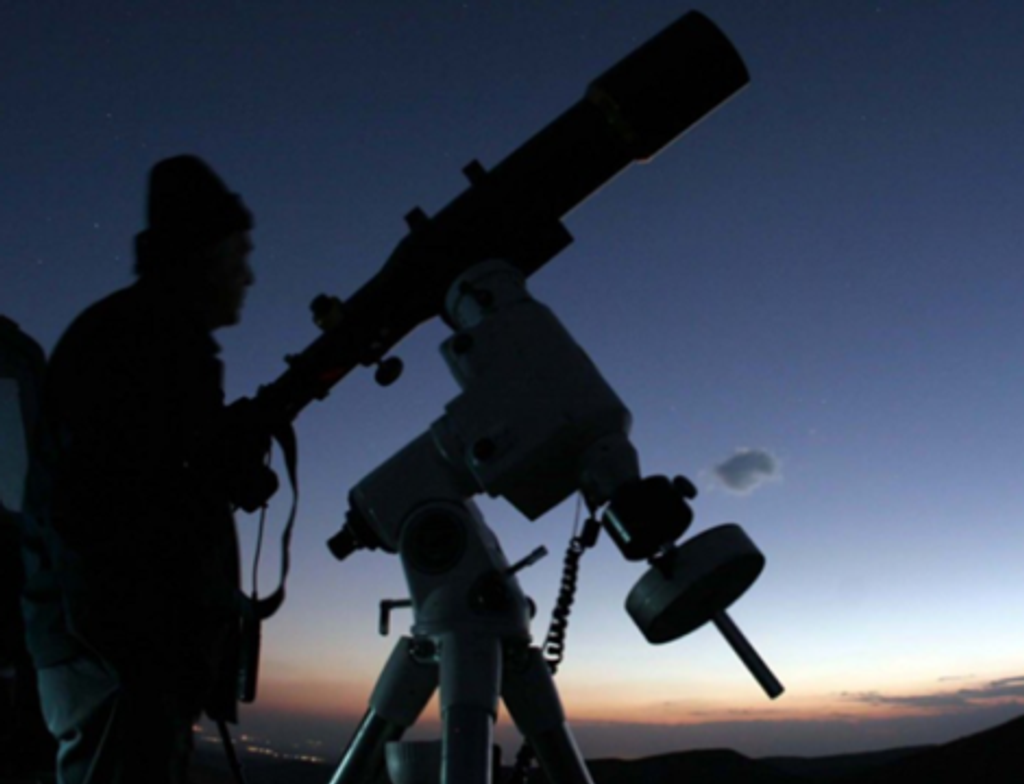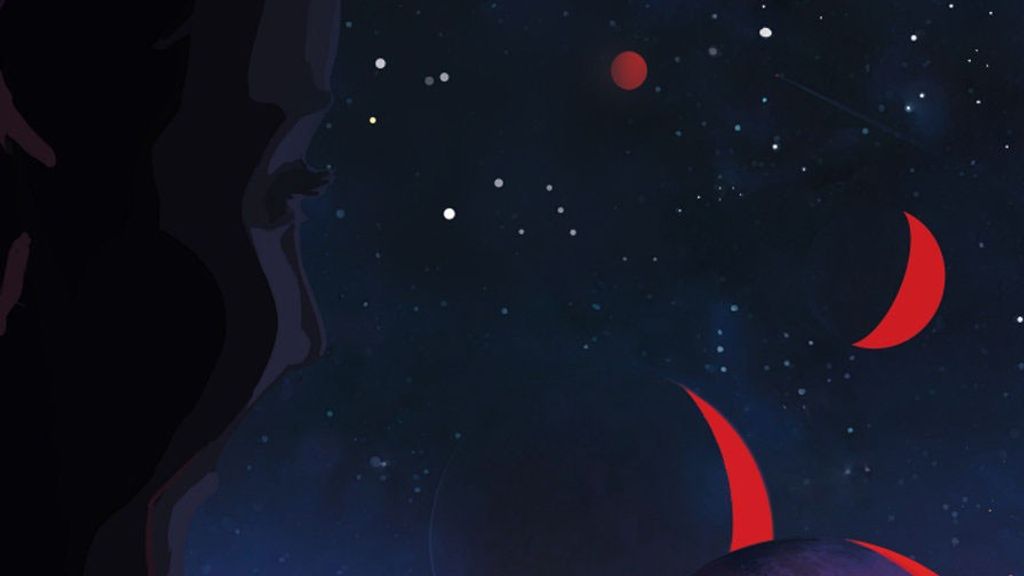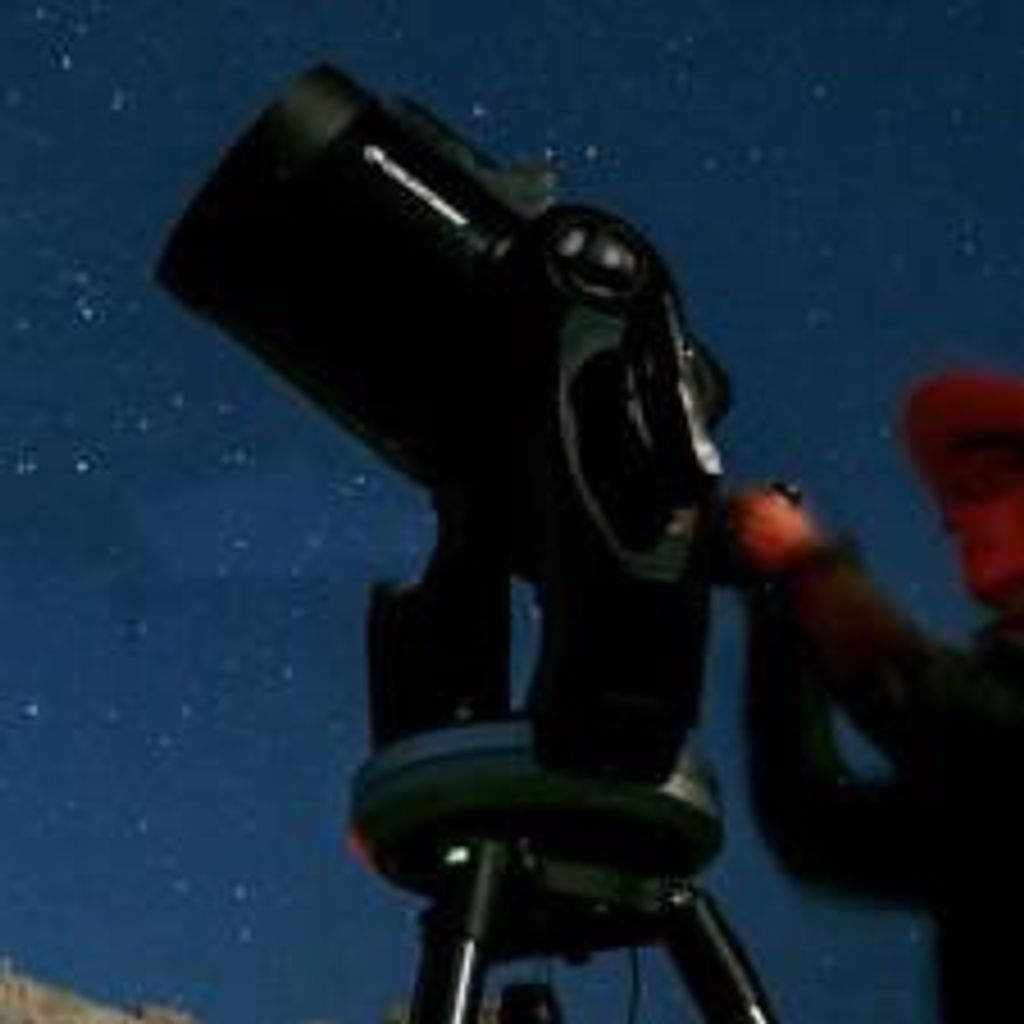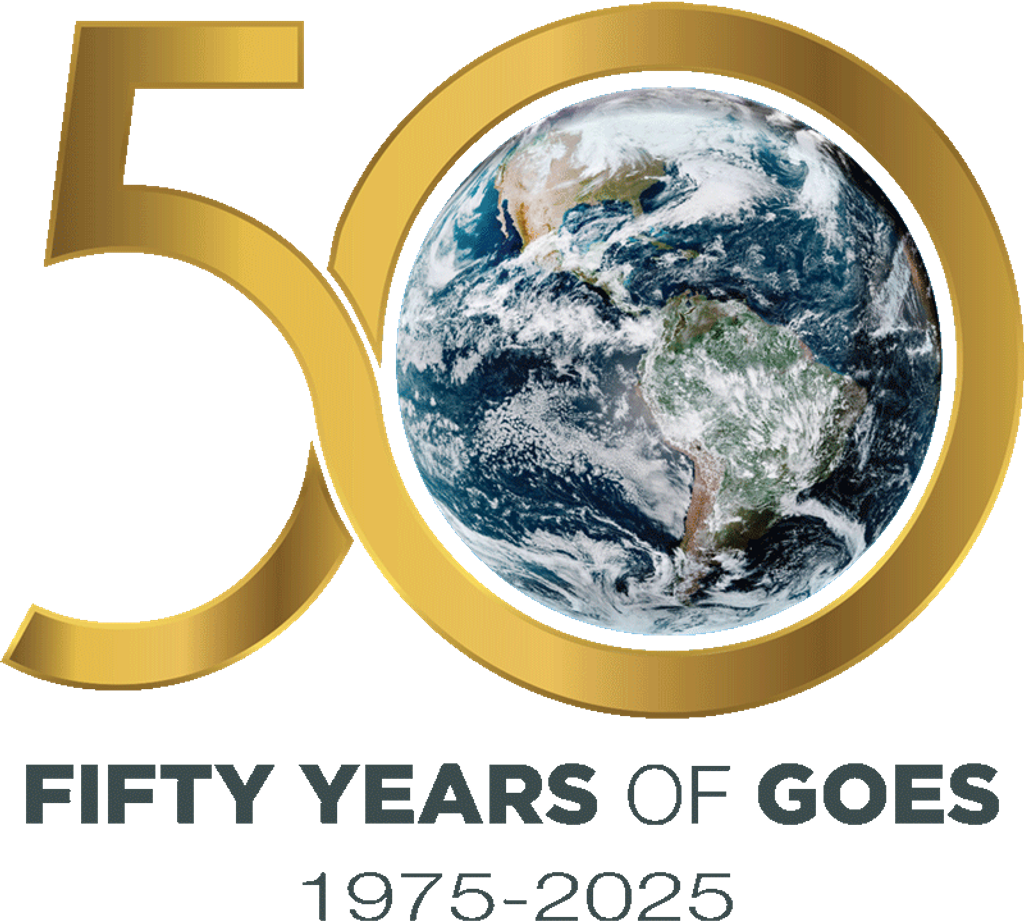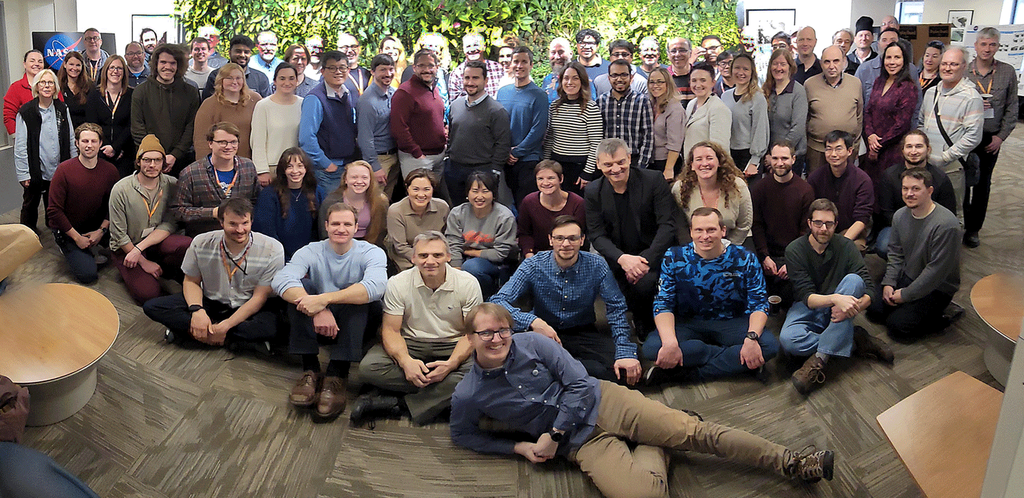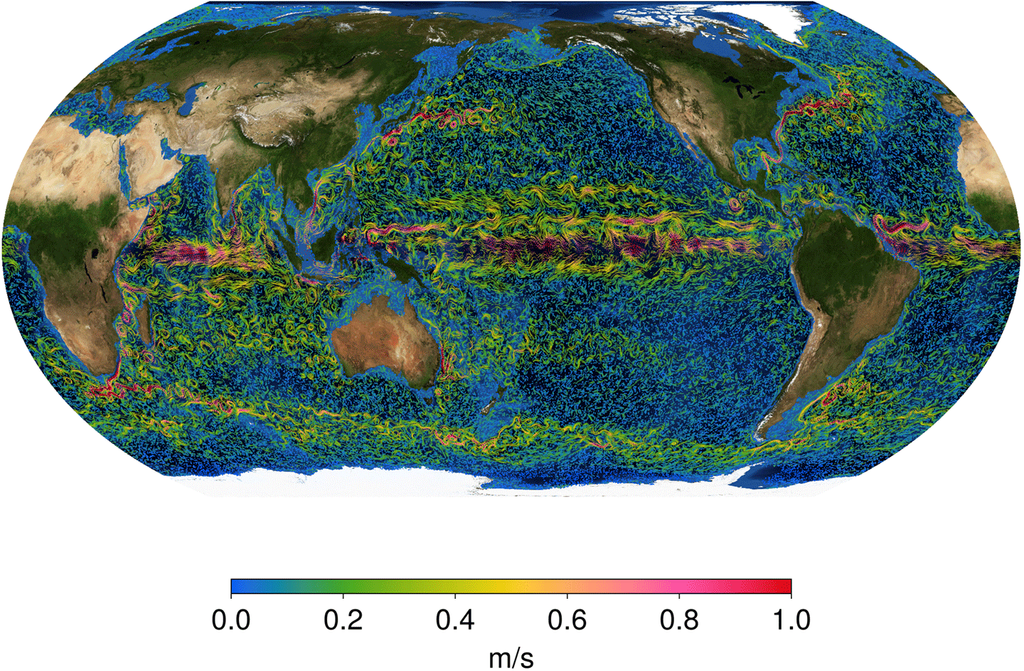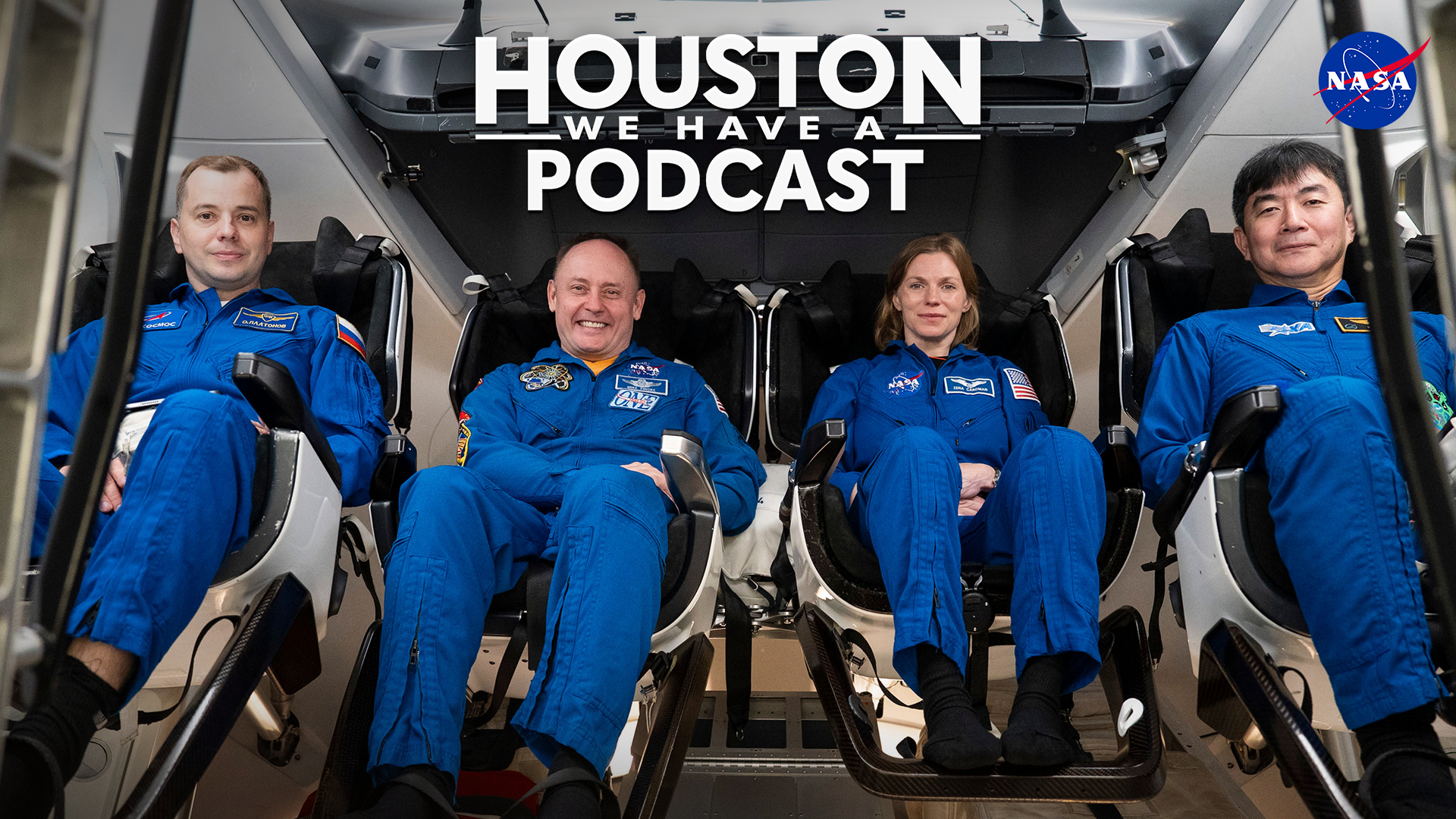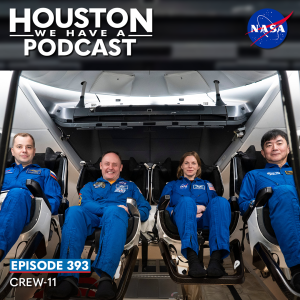
From Earth orbit to the Moon and Mars, explore the world of human spaceflight with NASA each week on the official podcast of the Johnson Space Center in Houston, Texas. Listen to in-depth conversations with the astronauts, scientists and engineers who make it possible.
On episode 393, NASA’s SpaceX Crew-11 quartet each dive into their paths to space and what lies ahead aboard the International Space Station. This episode was recorded in February and March 2025.
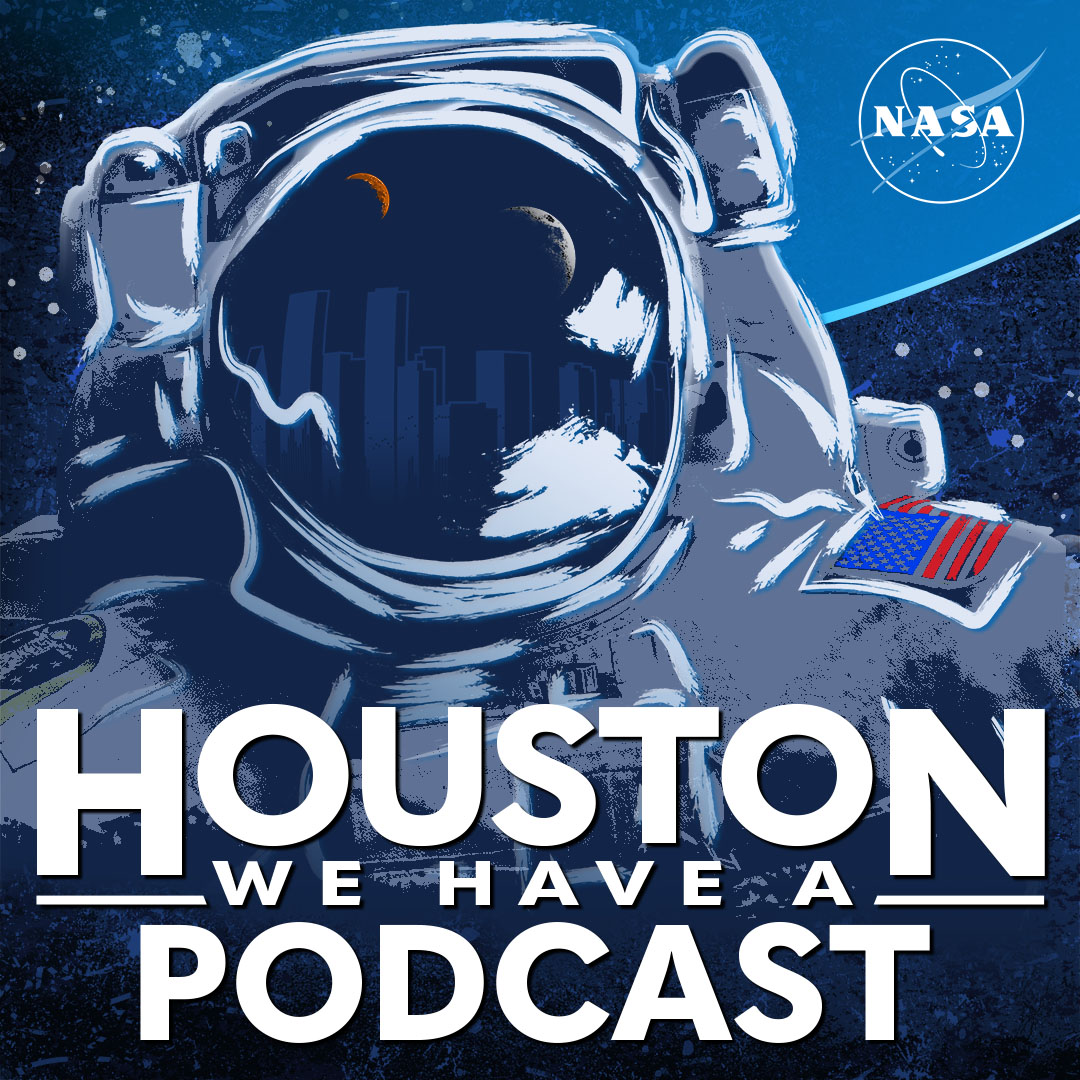
Transcript
Kenna Pell
Houston, We Have a Podcast. Welcome to the official podcast of NASA Johnson Space Center. Episode 393: Crew-11. I’m Kenna Pell, and I’ll be one of your hosts today. On this podcast, we bring in the experts, scientists, engineers and astronauts, all to let you know what’s going on in the world of human spaceflight and more.
It’s crew rotation time, once again on the International Space Station. Four crew members are set to launch on NASA’s SpaceX. Crew-11 mission headed to the station to relieve the crew 10 cadre. They’ll be joining expeditions 73 and 74 continuing the work in science through and beyond. The 25th anniversary of human presence aboard the International Space Station. Ahead of their mission, fellow hosts, Joseph Zakrzewski, Leah Cheshier, Dane Turner, and myself sat down with the crew to discuss their flight. With a mix of seasoned veterans and first time flyers, this well rounded crew is ready for lift off.
[Open Music]
Kenna Pell
First up is Crew-11 Commander Zena Cardman. Cardman was selected as a NASA astronaut in 2017 and is preparing for her first mission to space. Originally from Williamsburg, Virginia, she earned a bachelor’s degree in biology and a master’s in Marine Sciences from the University of North Carolina at Chapel Hill. At the time of her selection, she had also begun doctoral studies in geosciences. Her scientific background is rooted in geobiology and geochemical cycling, with fieldwork that has taken her from deep sea sediments to remote caves environments that mirror the extreme conditions of other worlds. Since completing her astronaut training, she has supported international space station operations and contributed to planning efforts for future lunar surface exploration.
Zena, thank you so much for joining us on Houston. We have a podcast today.
Zena Cardman
Yeah, happy to be here.
Kenna Pell
I know we want to hear your story. Our listeners want to hear your story. And could you just go through, where did you grow up and go to school and then kind of go into, what did you study in school and do post grad?
Zena Cardman
I was born in Champaign Urbana, Illinois, and grew up in Williamsburg, Virginia. We moved there when I was five years old. I have two older brothers, but they actually are much older, and so I effectively grew up as an only child. The younger of the two went off to college when I was about five.
Growing up, I loved the outdoors and loved exploring, even just my own backyard and the woods near where I grew up. I loved going to see meteor showers with my mom in the neighborhood park. But it wasn’t until high school that I really got interested in pursuing science as a career. I had an amazing high school science biology teacher who not only inspired me in the subject, but also encouraged me to just go do research on my own in a laboratory as a high school student. And that kind of blew my mind, that that was even a possibility so early on, and so that’s why I went down the path of biology in college.
I studied biology as an undergraduate at the University of North Carolina and Chapel Hill, and I am so grateful that I did that. But while I was there as a biology student, I broadened my scientific horizons a little bit, and I grew really interested in asking similar questions, but from different perspectives. So I became very interested in microorganisms and really tiny life that lives permanently in darkness. So underwater, underground, as an undergraduate, I was studying this in a marine sciences department, so mostly in the deep ocean, in hydrothermal vents, and then later as a PhD student, I was studying similar processes, but in caves and housed in a geosciences department.
So that’s my scientific journey through my student academic career, but it’s all been in pursuit of how life affects and is affected by its physical environment and chemical environment.
Kenna Pell
How did you know I was going to ask to explain what geobiology and geochemical cycling in labor systems. So you already did it, right? Perfect. Okay, can you tell us about some of the interesting places you’ve done that research?
Zena Cardman
As an undergraduate, I was in a marine sciences department, but a lot of the research that I did was unrelated to my own projects and my own thesis. As a graduate student, I worked for a lot of large, interdisciplinary, multi-year projects. So for example, the Long Term Ecological Research Program. This is one of many sites worldwide, but the one that I worked for was. On the Palmer Peninsula in Antarctica. This is the peninsula that sticks up towards South America, and it’s a really interesting and rapidly changing marine ecosystem. So I was working with scientists studying everything from the physics of sea ice formation and melting through the course of the year and from year to year, whales, seals, penguins, down to smaller things like phytoplankton, zooplankton, and then me coming in with a microbiology background studying the bacteria and phytoplankton.
Kenna Pell
How does exploring the sea compare to exploring space?
Zena Cardman
Yeah, you know, I think as an astronaut, it’s a common question that I get, how is your research going to apply? And scientifically, I think my background is probably more applicable to studying Mars or a planet that probably used to be wet and may have been habitable, seems to have been habitable sometime in its geologic history, and looking for evidence that that life existed or exists. But I think a lot of what I learned as a scientist working on board research vessels. How do you get a large group of people step offshore for weeks or even months at a time, doing interdisciplinary research with a lot of equipment? You’ve got to be your own plumber and electrician and also be a scientist, not only for your own research, but for other people who can’t join you on this expedition. I think those are actually the skills that will be most applicable for me on the International Space Station.
Kenna Pell
Absolutely about being your own plumber that might come in handy. What first inspired you to become an astronaut?
Zena Cardman
It wasn’t really until I was a student at Chapel Hill in college that I wanted to be an astronaut. A lot of my classmates here at NASA grew up, even as children, wanting to be astronauts. But that wasn’t me. I wanted to be a writer for a long time. I wanted to be a lot of different things, but as I started doing a lot of research, not only on campus in laboratories, but especially off campus, on research ships and in polar regions or in deserts. I really loved that operational side of the research, maybe even as much as the science itself. I just, I loved the teamwork side of it. I loved the challenge of going to those environments. And it was about that time that they were hiring the class that became the class of 2013 the Eight Balls. And I, growing up, always just assumed you needed to be a test pilot to be an astronaut. And that wasn’t my interest or my calling, but I started paying attention and noticing that there were people who had backgrounds more similar to mine, and I got really invested in the NASA mission. I actually wound up as an undergraduate and then graduate student working for these field projects that NASA was running that were analogs for planetary exploration. How are we going to do space walks or EVAs.
Kenna Pell
Your experience is perfect.
Zena Cardman
Exactly. I mean, thank you. I like to think, but it definitely got me thinking about how to contribute to NASA as a whole and bringing my skill set here.
Kenna Pell
Amazing. Now you’re inspired to be an astronaut at that point. And can you tell us about how you felt when you got the call, or just where you were when you got that call that said you were selected?
Zena Cardman
I will definitely never forget the day that we got the phone call. We knew it would be coming, but obviously had no clue what the answer was going to be. I was a graduate student at the time, I honestly, I wasn’t even sure that I met the bare minimum requirements to apply to be an astronaut, and so I was thinking I would just throw my hat in the ring as a practice round I would see what it was like, so that I could apply later for real. And it just kept working. I was ecstatic the whole time, getting to know these people, getting to know the other people I was interviewing with, was most of the fun of the whole process. So we knew the day that it was coming, and I had some friends over to babysit me emotionally while I waited for this phone call. We were actually watching Apollo 13, which I think is deeply cliche. I’m embarrassed to say that out loud, but here we are, and the phone call came. I was fully prepared for that to be a thanks, but no thanks. I had mentally prepared my little speech in my head, “thank you for this opportunity. I can’t wait to apply again.” And then the answer was, we would like you to come to Houston and be an astronaut. It’s yeah, I will never forget that moment.
Kenna Pell
I love that. I love the story about Apollo 13. It was Jim Lovell’s birthday yesterday. I think his 97th Happy birthday. Happy birthday. Jim, speaking of that, do you have an an astronaut that you look up to?
Zena Cardman
Oh my gosh, I have so many. I I feel very fortunate that many of the astronauts i. Look up to are actually my coworkers now. They’re astronauts who are here at Johnson Space Center and at our international agency partners. I love that my classmates inspire me and challenge me and help me grow as a person. Another astronaut that I always looked up to and then actually got to meet a few times was Michael Collins, who was the member of Apollo 11, who didn’t fly down to the surface of the moon. And I always found him to be such an inspiring and humble and just beautifully optimistic person. He brought so much positivity to sharing the space flight story, and I remember one time meeting him for the 50th anniversary of Apollo 11, and we were intended to speak about passing the torch from one generation of astronauts to another, but we got on the subject of poetry. It came out that I was a creative writing minor in college and had done my thesis in poetry, and Michael Collins started reciting from memory, Paradise Lost, and I just loved him so much in that moment,
Kenna Pell
You loved him even more.
Zena Cardman
Absolutely
Kenna Pell
You didn’t think you could. I love talking to the turtles. Oh, because I love talking to all of you know, any astronaut class. But you guys always talk about how much you love your astronaut class.
Zena Cardman
We do. We love each other, all hugs and high fives. People make them yes for it, but it’s true.
Kenna Pell
What’s been the most challenging part of your training so far ahead of your first space flight?
Zena Cardman
Oh my gosh, it’s been a long journey training for my first space flight. In some ways, I’ve been training for my first space flight since I was in high school. Everything that I have done is preparing me for this mission. All of the people who have been mentors and colleagues have prepared me for this mission. I started training specifically for a long duration mission on the International Space Station. A few years ago, I was first assigned to crew nine, and all of the technical side of the International Space Station is pretty familiar. We do a lot of training when we’re astronaut candidates, and for our first years here at Johnson Space Center, we learn the ISS pretty well. But now transitioning to this mindset of, oh, I’m actually flying here. You have a really different perspective. And a lot of the challenge and a lot of the most fun and most fulfilling side of it is that now we get to do this with our actual crewmates, and so learning to do these procedures that are very familiar to us, but together as a team. And how do we each bring our strengths to this problem that we’re solving? I think is just really fun.
Kenna Pell
I love that. It’s like we’re training and training, and then all of a sudden, oh, wait, I’m actually going there.
Zena Cardman
Exactly yes. I’m not sure I will actually believe it until I get there, but…
Kenna Pell
You mentioned it due to some operational changes and you were reassigned from Crew-9 to Crew-11. And talking about training, can you share how the flow of training went with a new crew?
Zena Cardman
Yeah, for sure. I mean, it’s, it was, it was really challenging to train for so long with crewmates who are not only my colleagues, but they feel like friends and family at that point, and to then know that we’re not all flying together to carry out this mission that we expected. Of course, that’s a challenge, and that was it was bittersweet. But I think as professional astronauts, we aren’t doing this for ourselves. I don’t want to shock anybody, but space flight is not about me, Zena Cardman, you know, and we all recognize that we’re contributing to something that is much larger than ourselves as individuals. And I find it’s a great privilege to take part in something that’s really big and collaborative. And so I think the biggest disappointment of how Crew-9 played out was just not getting to fly with each other. But I loved watching Nick Hague and Alex, who I had trained with so much, get to carry out the mission and contribute, and then bring Butch and Suni into the fold of Crew-9. They are now returned home as a full team of Crew-9 crew members, has been really beautiful to see. And so some of the challenge for me is just transitioning to a whole new group of people, a new training team, new doctors who are taking care of me, new crew mates, obviously. But I love that my Crew-11 crew mates, actually, all of us are coming from previous crew assignments to other crews that we didn’t wind up flying with, and I think that’s given us this incredible sense of gratitude and optimism and just a commitment to the journey, and not exactly just that end destination.
Kenna Pell
You said, commitment to the journey. And that reminds me. Something kind of behind the design on the patch. It said, “Crew-11, We Rise.” Is that what that says?
Zena Cardman
That is, yeah.
Kenna Pell
Can you talk about the behind the design of the patch?
Zena Cardman
Yeah, the design of the patch was very collaborative. I had a lot of input from my crew mates. I drew the dragon and the patch itself, and then had a lot of help from some NASA graphic artists. There’s a lot of symbolism in the patch. I think a patch symbolizes not only the crew, but also the larger mission and the teams who prepare us to get there. So we have a lot of symbols for our different space agencies and the family members of the crew.
Kenna Pell
I love that you drew it. Oh, thank you. So how do you think, you know, when I interviewed Don Pettit, I said, your free time, but he said, “No, it’s off duty time.” So now I always say, off duty. How do you think you’ll spend your off duty time while you’re on the space station?
Zena Cardman
Oh, gosh, I you know, I could go a lot of different ways with that, and in some ways, I just don’t know until I get there what is going to spark my creativity, my inspiration. While I’m on board, I plan to write a lot so that I can share that journey. I just really hope to share the journey with people, whether that’s through writing or photography. I’ve grown to really love photography in the last few years. That was something that I found to be a really helpful tool when I was doing field work in remote locations, to just share what the purpose is and the human side of that research. So that’s probably what I’ll spend a lot of my time doing, is taking pictures and writing down what I’m seeing and feeling.
Kenna Pell
In your words, why is the International Space Station and microgravity research important?
Zena Cardman
Research on the International Space Station is important for, I think, two different but important reasons. One is for Earth. So much of what we do is just for Earth, understanding our place on the planet, and also understanding humans and the human body. I mean, it’s it is interesting watching how the human body reacts to being weightless for long durations, but our bodies experience this stress response that’s really similar to aging populations or immunocompromised populations here on Earth, and so seeing how our bodies respond and then recover from those conditions is helping people on Earth. The technologies that we’ve developed to sustain life on the space station is really useful for people in remote, underserved, challenging environments on Earth, whether that’s water reclamation or 3d printing tools or even 3d printing organs. So I absolutely love that side of the research. But then I think it’s also critical, as we think about going farther afield, going back to the moon to stay for long durations, and eventually going to Mars and beyond, we have to figure out how to do that for long durations first, and we’re doing that on the ISS.
Kenna Pell
Back on the ground, you mentioned you love being outdoors. What are some of your hobbies outside of training to go to the space station?
Zena Cardman
These days, I think my hobby is training to go to the space station, but I love I do love being outdoors. And before my schedule was quite as constrained as it is now, I spent a lot of time traveling to go like rock climbing in national parks or just even hiking around. But I love exploring closer to home. I think that’s just as valuable, if not more important, than going to these really charismatic, beautiful places that are that are elsewhere. At home now, I love doing little art projects. I spend a lot of time doing photography. I’ve been trying to figure out how to do tin type photography. It’s like a really old school style of photography. If you’ve ever seen photos from the Civil War era, it’s both photography, but also organic chemistry, and so that kind of scratches my wet lab itch that I’ve been missing lately.
Kenna Pell
Last but not least, this is, I just want to know. I love your name. Where did you get where does Zena come from?
Zena Cardman
Yeah, I was named after my mother’s mother. Her name was Zenobia, which is quite a name. I’m just Zena. She went by Zena for short. I’m just Zena on my birth certificate. Her name was Zena Fox. She was quite a character. Big boots to fill.
Kenna Pell
Beautiful. Zena, thank you so much for joining us on Houston We Have a Podcast today.
Zena Cardman
My pleasure. Thank you for having me.
Joseph Zakrzewski
Veteran astronaut Mike Fincke embarks on his fourth mission to the International Space Station, logging 382 days in space and completing nine space walks across three previous flights. Expedition 9 in 2004, Expedition 18 in 2008, and STS 134 in 2011, the final mission of Space Shuttle Endeavor. Over the past decade, Fincke has played a key role in NASA’s Commercial Crew Program, helping guide the development and certification of both SpaceX’s Dragon and Boeing’s Starliner spacecraft. And Emsworth. Pennsylvania native, Fincke is a retired US Air Force Colonel and a distinguished graduate of the US Air Force Test Pilot School. He holds dual Bachelor’s degrees in aeronautics and astronautics and Earth, Atmospheric and Planetary Sciences from the Massachusetts Institute of Technology, as well as a master’s in aeronautics and astronautics from Stanford University, with more than 2000 flight hours and over 30 different aircraft. Fincke, brings a deep technical knowledge and operational experience to NASA’s ongoing human space flight missions.
Hello, Colonel Fincke, thank you so much for joining us on Houston We Have a Podcast today.
Mike Fincke
What a thrill to be here, and I’ve always wanted to be on Houston We Have a Podcast.
Joseph Zakrzewski
You have an incredible career here at NASA as an astronaut, and you’ve flown to space. This is gonna be your fourth flight as a part of NASA’s SpaceX Crew-11. It’s something I really want to dive into. Just your time on orbit, the EVAs that you performed with nine and counting, with hours that accumulate over two days. I mean, the list goes on and on, but for me, this being your first time on Houston. We have a podcast for Crew-11. I’d love to kind of rewind the clock a little bit, get the orbit the origin story, the superhero origin story of of Colonel Mike Fincke, and where his journey began to become a NASA astronaut.
Mike Fincke
Yeah, I have a interesting story, and has some highlights and low lights. And just like any other human, it’s, uh, life is interesting. But I, I’ve really been really lucky in my life to to get my dream to come true, and that was sitting on a launch pad, launching into space and seeing Earth from space. And I’ve got to do that three times so far, looking forward to flying on a Crew Dragon, on Crew-11, back to our beautiful International Space Station. But where did it begin?
Imagine yourself in Pittsburgh, Pennsylvania in the 1960s, 1970s. I was born in Pittsburgh itself. Grew up in the north burrows, part of Pittsburgh, if anyone knows where that is, Ben Avon, Emsworth and I went to high school in Sewickley, but I started out in the Avonworth school district. So hometown, shout out. So, what I, when I was a kid, I was watching people walk on the moon, and that was really cool. Not just Apollo 11, but all the Apollos. I remember in 1972 you know, when Apollo 17 was up there, and I was at my grandmother’s house, and I saw a big Full Moon on there. That is so cool, that there are people on that moon right now, and I knew in my heart I wanted to be part of that. And a lot of people have dreams like that. And I was not just lucky, but I worked hard, like a lot of others, to have dreams come true. And that’s part of my story. Of origin stories, is that, hey, we all have an origin story. And along the way, if you work hard, and if you plan, and sometimes things can really go your way. And there I was on a rocket in Kazakh- Kazakhstan. What? How did I get from Pittsburgh to Kazakhstan? That’s a crazy story, right?
So when I was a kid, I studied math, science engineering. I loved reading, love science fiction, and it just really inspired my imagination. I was precocious. I was the oldest of nine kids, and so my parents didn’t quite know what to do with me. They sent me to a summer program at then Buell planetarium, now part of Carnegie Science Center, and built model rocket and model airplane. It’s like, well, I love rockets and airplanes, and I like building things. So in my academic career through middle school and high school, I really focused on science and math, not only because it was helping me get to where I wanted to go, but it was also stuff that was really cool. How do you how do you make the universe work? How do you build something? How do you make something? I wasn’t quite sure what an engineer was, but I signed up to study engineering. I was pretty sure it had something to do with rockets and airplanes. So I was always in 100%.
Didn’t have any money to go to college, but Air Force ROTC program gave me a scholarship which paid for tuition and books. I came up with room and board by having a few side hustles, and I think there might have been a Pell Grant in there too. So I was able to go to MIT and study my tail off with some really smart people that really kept me up on my game. What we do for social things was we’d study together, and that’s really a fundamental part of what helps me be effective team member here at NASA is because I learned how to think with a group. There’s always somebody that has a good idea, and we would solve a problem together. Sometimes I was the guy, sometimes I was the guy learning. And it was really neat to be able to work together. And so that’s what I really liked about university and college, was learning how to how to make. Something and how to put it all together. And, more importantly, how do rockets really work? How do airplanes really work? And so, and then the Air Force gave me some really cool jobs in both the space and the airplane world, and that led me to NASA. And there I was in Kazakhstan on a rocket.
Joseph Zakrzewski
And you joined NASA in 1996 and you’ve been a part of so many key missions. This, again, is going to be your four be your fourth flight as a part of NASA’s SpaceX Crew-11, a part of shuttle missions, a part of you mentioned Kazakhstan and Soyuz as well. But for you, and kind of going back, it sounds like, and I’ve heard you mentioned that that being an astronaut is the ultimate team sport. Being a part of NASA is the ultimate team sport, and it sounds like you had a great support system to be a part of that team for you as you were growing up and in through the college ranks, ROTC and beyond, what was that support system like for you from the very early ages when that inspiration struck, when you saw astronauts walking on the moon to where you are today?
Mike Fincke
Yeah, so that’s a really good question, in that part of my role is to be a good, the best teammate I can be. And sometimes we get asked to be the lead, you know, the team captain, and sometimes we’re just the person who fetches water, or whatever it is, they’ll Gatorade for other folks and either. And they all have a joy to them, and they all have a need. So I enjoy being a part of the team, on whatever team I am, and I always try to figure out a way where I can be helpful and so, but where did I learn that? Right? So growing up, my family was kind to support me. Was able to get a scholarship to a fancy prep school in the Greater Pittsburgh area where they could really allow me to intellectually and academically excel, and having that opportunity, I know I have a responsibility to do my best with that, with all of that. So having a support team, having a teacher who, you know took me aside say, you need to work harder, or, Hey, you’re doing great. Let’s, let’s get you to the next level. And I want to be that kind of person too. I want to be able to help my my colleagues, my crew mates, some like Oleg and Zena haven’t been in space before, and I have. So we’re going to work on it. You’re going to see it together and make that experience as best we can for them to really enjoy that, enjoy that time together as a crew, as a team.
Joseph Zakrzewski
And with that, let’s talk about your experiences prior to joining NASA’s SpaceX Crew-11, and that you have had time in space. This is gonna be your fourth flight, as we mentioned, over 380 days in in low Earth orbit. You’ve been a part of nine EVAs total, so been able to venture outside, into the vacuum of space for over 48 hours, two days worth of time. I’d imagine you know of your career and looking back that being able to go back is exciting for you, but kind of take us through those initial missions again, with Soyuz, STS-134, and the shuttle missions and training all the way up to Crew-11. What excites you a lot about coming back to low Earth orbit?
Mike Fincke
So I got here in 1996 I was 29 years old, double that, and now I’m 58 and what happened in that time? So when I got here, the Space Shuttle was at its heyday, and the class right before us, the class of 1995 they were all getting their flight assignments, and we figured, we get our flight assignments go fly on a shuttle mission. I received a, um, my first flight assignment was to be a backup for Expedition number four to the International Space Station and then go fly on a shuttle, and then go fly on a on a space station mission. So it was a really good deal, until we lost our space shuttle. We lost Columbia, my friends on board. So I think one of the messages that I always like to share is that, and I think Edna Mode from The Incredibles said it best. You know, “luck favors the prepared.” And so, because I could speak Russian, because I did very well in flying Soyuz as a as a rescue ship or a lifeboat back at the beginning of Space Station. That’s what Soyuzes were. Were for. I got to launch on a Soyuz and land in a Soyuz, which was not a thing by plan, right? But we were prepared. How did I get there? Well, in college, they said you have to learn a foreign language. I said, what other country flies in space? Soviet Union at the time, and they speak Russian. So I’ll learn Russian. And it turns out that I had a chance to be an exchange student in Soviet Union and at Moscow Aviation Institute. I will tell you that Russian language brought my grade point average down, which is an engineer you usually take classes to bring your grade point average up. But I was glad I took it and stuck with it, because once we started talking about my favorite things, rockets and airplanes, then all of a sudden the language clicked. And because it clicked, I got a chance to fly on Soyuz twice as a flight engineer, as co pilot, I got to push buttons and fly a spacecraft that way, as well as they said, “Look, Misha, you speak our language. You know about space walks. Why don’t you walk in Orlon?” So I got to do six of my nine space walks in Russian Orlon. And no other Americans had that, that privilege and that opportunity, but I was the right place the right time and luck favors the prepared.
Joseph Zakrzewski
And that’s a great motto, just in life, and that’s something that I would love to dive into a little bit more with you. If you, if you don’t mind, sir. And that is, is what you’ve been able to accomplish in low Earth orbit as we, you know, make our way and prepared for NASA’s SpaceX Crew-11 with that, you’ve- Soyuz, shuttle. You were a part of Boeing Starliner and Starliner One, and training on that spacecraft for commercial crew program. Now you’re with SpaceX Dragon program and training on that. So that’s four different vehicles. You talk about setting history and what you know, not many astronauts get to partake in, but to have four different vehicles where you’re the one that you say, pushing buttons that has to excite you getting ready for this upcoming mission.
Mike Fincke
I am completely, absolutely thrilled to get a chance to fly Crew Dragon. I was really enjoyed flying on Soyuz. I enjoyed helping put the International Space Station together. Our class actually, our astronaut group. We actually helped with the user interfaces for space station itself. You know which buttons to push, how to make different icons on the computer screen, how to command and control and work with procedures with the International Space Station, and then we get to invent and make new things with the Commercial Crew Program, which is the post shuttle NASA way to get people up and down to the International Space Station. We had a great success with our cargo missions, so we said, hey, why not do the same thing for crew? It’s not exactly the same thing, it’s another level of redundancy and protections that we need for crew versus cargo. And as a experimental flight test engineer from the Air Force, that’s exactly what I grew up, those are my that we would do those kind of things for breakfast. So I had a chance to help with two new spacecraft. They signed me with the Boeing team, and we did our very best. I was on the original crew flight test team, CFT, especially when we had three people. There was Chris Ferguson, myself, Nicole Mann, things evolved with the program. We sent up Butch and Suni, and I walked them to the rocket and that was a big privilege. There’s only three of us now that are certified to fly Starliner, and they said, Well, you’re good at that. Why don’t you go fly Dragon? So here we are. Yeah, are, and different user interface, but because I’ve had the joy and knowledge of flying three other spacecraft or being trained to fly them and certified. It was, it was, I’ll say, easy, but SpaceX user interfaces, the way that they do things, was very natural and intuitive, and the Crew Dragon is a joy to fly.
Joseph Zakrzewski
That’s incredible, and to have that background and that knowledge, and it seems like you’re one that’s eager to learn a lot of these systems. Like you said at the very beginning, you’re always interested in rockets and airplanes, and I think that fits that mold absolutely perfectly. Before we leave talking spacecraft and focusing exactly on Crew-11 and your crew mates that are going to be joining you on this upcoming mission. One thing that I noticed and personal to you is Space Shuttle Endeavor, and that was one of the missions that you were flying on STS-134, the penultimate shuttle mission is what it turned out to be in the final mission of shuttle Endeavor. I know that has a special place for you when you train for SpaceX. That’s Hawthorne, California, Endeavor shuttle is just right down the road at the California Science Center. So I know being in close proximity to a craft that is very special to you has to have a special place in your heart.
Mike Fincke
It certainly does, and part of the reason was that I was pretty much resigned of being a space station guy that only flew up and down on Soyuz, because all my friends are flying space shuttles, and they needed me to be backup crew for for a lot of station missions, I was back up for an Expedition 4, backup Expedition 6, backup Expedition 13, backup Expedition 16, because they needed somebody at the right time, at the right place, and luck favors the prepared. So, but so I didn’t think I was going to get a chance to fly the space shuttle, but then they put the Alpha Magnetic Spectrometer mission together, and I was offered a position, and I said, Yes, please, and we got to, got to launch in 2011 and fly to the International Space Station, deliver the Alpha Magnetic Spectrometer, and in some respects, finish the completion of space station construction. And which allowed we had one more space shuttle mission after that. And then after that, we retired the fleet. When we retired the fleet, where was Endeavor going to go, right? And so our crew was lucky to be the last or unlucky, depending how you look at it, but we were the last, the last crew for Endeavor. So we got to walk with the space shuttle as it arrived in Los Angeles and through the streets of Los Angeles, where I spent a lot of time as an Air Force officer and. And it was, it was a little bit like a little bit of a homecoming for me. And we got to walk our space shuttle to the California Science Center. And I was very impressed with the people of Los Angeles. They lined the streets. It was a very special day. It was a hard day. They had to move telephone wires and trees out of the way and and replant the trees immediately after the shuttle went through. And I recommend anybody who has a chance to, and they find themselves in Southern California to stop by the California Science Center and see our beautiful space shuttle, what human beings built and what and helped us build the International Space Station and open up low Earth orbit for us.
Joseph Zakrzewski
That’s an incredible story, and it’s gonna be configured again. It’s gonna be in the launch configuration with the solid rocket boosters and the external fuel tank. I know something that you’re looking forward to now with launching on Crew-11. That’s gonna be my segue, at least.
Mike Fincke
That was a great segue. I’m with you.
Joseph Zakrzewski
So with that, what has been, you know, we mentioned your incredible history again, over 380, days in space, nine EVAs, the amount of spacecraft that you’ve trained on, the amount of years you’ve put into the effort to be an astronaut and continue to be an astronaut, what has been some of the more challenging parts and exciting parts of training for Crew-11?
Mike Fincke
Yeah, so it’s been like 14 years since my last flight, and I’ll say that the toughest part for me being an astronaut is to be patient. I’m not a naturally patient, but on the other hand, when you’re doing something that’s important and NASA needed me, or asked me to anyway, to help with the Commercial Crew Program, to get new spacecraft built and off the line and send your friends to go fly. So I got a chance to be the astronaut senior representative or leader for the Commercial Crew Program, and I helped Bob and Doug get ready for Demo-2. Of course, every single astronaut, when you watch a launch, you say, I wish I was there. So it’s not a bad envy. It’s just like, hey, I’m really glad for you guys. I wish I was there. So it was great. And the same thing with Butch and Suni to get them launched on the first Starliner. Wish I was there, but I was really glad for them. And so this is a really cool thing. We don’t usually get to see new spacecraft to be developed in our time frame, but for me, I got to build and help build a brand new space station. I’m very proud of our space station that we humans have built. I’m proud of our international partners, as well as contributions of NASA and all of our industry partners, because that space station is old, and it’s still doing great, considering, all things considered. And it really has helped us. And then now I get to go fly. It’s my turn, finally, and luck favors to prepared was myself and Kimiya Yui were along with Scott Tingle and Josh Kutryk. We were an announced crew. They’re gonna go on Starliner 1 once Butch and Suni came back after their eight day mission. And we all know that that didn’t happen that way. No problem. And the office reassigned me and said, “Nope, you get to go on a different one. Are you ready?” Luck favors the prepared. So, but it wasn’t, it’s, and for me, it’s one of the really cool things about training. It’s not when you fly, but who you fly with. And I did not know Zena very much. She’s one of the newer classes. I didn’t know her. I knew Kimiya Yui a little bit because we both Air Force backgrounds, and we were on Starliner 1 together, and I didn’t meet Oleg Platonov until, you know, his first trip for this, for this mission. But I ran into him in the hallway and and we started talking, and then he started speaking in English, and it’s like dang, this guy’s worked hard to get his English, and he’s been working hard. It’s been fun watching him just improve and improve and mastering English, because English is really amazing. So anyway, so Zena, awesome. I hadn’t met her before. I am impressed with her intelligence. Her I don’t feel like this is her first flight. I really feel like she’s a veteran. She really understands how Dragon works. She knows what we need to know, and she’s helped us new Dragon newbies, because she had been experienced as commander of of Crew-9, and then with with the Starliner, changing everything around. She got a chance to be a Commander for 11. And I, my job is to support her, to give help her build situational awareness. And she’s really good at it, and she keeps us she keeps us happy. And the one thing I personally really enjoy about Zena is that I’m a dad. I throw dad jokes. I enjoy language plays, and sometimes we throw in a Russian joke in there too. And not only does she keep up, she actually stays ahead of us and throws in the best zingers, and it’s and we all laugh. And a Happy crew is a productive crew. We’re all focused on the mission, getting things done. But that doesn’t mean we can’t smile as we go along. Thanks, Zena.
Joseph Zakrzewski
And that was- I was going to ask, tell me about your crew. One thing you brought up too, is, is you talk about. Favorites, the prepared. I love that this has kind of become the mantra of this, of this section of the episode. With that too, you mentioned that everybody on this Crew-11, all came from different crews. All had to be prepared. All had to be ready. So when that phone call came, or that meeting came of Crew-11, are you ready? They all were. And I feel like that’s a great common chemistry builder, a bond that everybody has together, that they’re able to take those experiences, unite together and create this crew for Crew-11.
Mike Fincke
Yeah, thanks for saying that and noticing that. Is because this is not normally how we do it. You know, especially the new people that get assigned and then they just go train, and then they go fly, and then they come back, and then they work till they can get assigned again. This way, we’re a little bit- this way, we all came from some somewhere else, and we were able to still come together with all of our different backgrounds and find a really strong commonality and be a really strong crew.
Joseph Zakrzewski
You talked about the International Space Station, and now being a part of NASA SpaceX Crew-11, that is the destination that you are headed and you have a unique perspective. You’re one of two members of this crew that have been in orbit before, and you’re returning to a place that you helped build. What does it mean to go back to the station, and what are you looking forward to upon your return?
Mike Fincke
Yes, I have been dreaming about flying back aboard the space station for a long time now, and I’m really excited to go back. There’s a couple things here that I that I’m thinking about. It’s like, yeah, I love being zero G again. I enjoy, I’ll enjoy doing the getting our science done. I think we might have a few space walks. And I’m looking forward along the way, though, what I’m really want to get get out of it is that, just like people helped me along the way. I want to I want to be that same kind of guy. My first mission, I flew with Gennady Padalka, who for a long time, had the record for humans in space, and he was when we flew as his second mission, and he took me under his wing and showed me how to do everything. I want to be that same kind of guy that supports my crewmates who haven’t been there as long as I have, and to share some experiences to make it a great mission for them. So I’m really looking, really looking forward to that. And then I respect you. That’s Kimiya Yui. This is the second mission. So he’s going to, we’re going to be in cahoots together to help all the new, the new folks, to really have a great, great mission. I really respect Kimiya, what he brings to the table, and his sense of humor and his incredible competence.
Joseph Zakrzewski
And with that too, you’re going to be participating in incredible technology demonstrations, outreach materials, microgravity research, all to help benefit humanity and its ultimate goal, and especially for NASA, under the Artemis program, to return to the moon. In your opinion, why is are these steps so crucial for the Artemis program, and why does humanity continue to push the boundaries and continue to explore
Mike Fincke
well, just a small question there. I’ll try to try to answer in maybe one or two sentences. No. So, first off, we are making the really smart plays as NASA and as an engineering and operations teams, right? We are really saying, Hey, before we go to the moon and put all of our eggs in one basket, let’s make sure equipment works, and the space station is a great proving ground for exploration technologies like, how do you have a regenerative carbon dioxide removal system, so you don’t have to bring tons of lithium hydroxide with you, which is what we used in the Shuttle, for example, to take carbon dioxide out of the atmosphere. How do we make sure we have good toilets and good water recovery systems? We do that aboard space station every day, and we find out things that even with our best plans on Earth and our best engineering, sometimes it doesn’t work. And so we figure out how to make it work, and then we take that extra super knowledge and help reduce the risk or guarantee success on the moon. So Space Station is a really great platform for that, and we have a really nice infrastructure getting up and down to Space Station, so it’s relatively easy if something breaks on the moon or we have to figure things out. It’s a lot harder for sending things there, back and forth. So we’re doing all the smart things now. We live and work aboard the space station knowing that we’re helping our fellow human beings. And some of the previous crews even had their patch motto “Off of the Earth, for the Earth,” and that’s exactly what we all believe. We think that by exploring and leaving our cradle of Earth and going to the rest of the solar system and to the stars beyond, is part of our if I can be so grand, our manifest destiny. But this is what humans do, and the more we explore, the better off we can make our lot as human beings. I think most people would agree that in the last 1000 years, the lifespans and the lives of humans are a lot better, and that has to do with we explored not just the physical world around us, but also we understand the universe around us in terms of physics and math and. Use that to our benefit. We have electricity, we have computers, all these things we didn’t have before, and that’s because we’ve explored and Space Program is at the forefront of that. And at the forefront of the space program are my are all of my teammates and fellow astronauts and cosmonauts, along with the rest of our teams of engineers and scientists that are here at NASA and an industry commercialization of space has gone a long way. SpaceX is a great example of that. There are a lot of other companies that are on that way. And part of my job is to encourage the new engineers and scientists the STEM fields, and to say, look, if you have dreams of being in space, right now, we’ve had less than 700 people to be in space, even if you count the suborbital folks that are now, I’d like to see it 7000. Why not 700,000 right? And that’s the kind of future that I want us to build. I think that’s part of our national goals as a country, and it’s great to be part of that team. Fun as heck.
Joseph Zakrzewski
Well, sir, I feel like we’ve barely scratched the surface. I could ask you 1000 more questions about your experiences and what you’re looking forward to, but unfortunately, I know you have out and I need to let you go. But if anything for the young and the young at heart to take this away is that luck favors.
Mike Fincke
Luck favors the prepared, exactly. So be prepared. Study hard, be kind to each other. That’s what humans are best at. Even though we fight sometimes, it’s still really good and and if you want to fly in space, come join us at NASA. Study hard at school, and you’ll find yourselves with a lot of opportunity, luck favors the prepared, just like you said.
Joseph Zakrzewski
Colonel Fincke, thank you so much for joining us on Houston We Have a Podcast.
Mike Fincke
Yeah, thank you. I’ve always wanted to be on Houston We Have a Podcast, and now I have been. Yee-haw.
Leah Cheshier
Next up is Kimiya Yui, Japan Aerospace Exploration Agency, or JAXA, astronaut and Crew-11 Mission Specialist. Yui graduated from the school of science and engineering at the National Defense Academy of Japan in 1992 and later joined the Air Self Defense Force at the Japan Defense Agency, currently the Ministry of Defense. In 2008 Yui joined the Air Staff office at the Ministry of Defense as a lieutenant colonel. He was selected as an astronaut by the Japan Aerospace Exploration Agency in 2009 and flew as a flight engineer for Expedition 44 and 45 becoming the first Japanese astronaut to capture JAXA’s H2 transfer vehicle. And he acquired 142 days in space. In addition to constructing a new experimental environment aboard Kibo, he conducted a total of 21 experiments for JAXA. In November 2016 Yui was assigned as chief of the JAXA astronaut group. Crew-11 will be his second space flight. I very much enjoyed the chance to have a short chat with Kimiya Yui. Here’s more from the man himself.
Leah Cheshier
Kimiya, thank you so much for joining us today.
Kimiya Yui
Thank you for this opportunity.
Leah Cheshier
I’m so excited to get to talk to you. We’ll get into your past missions, but your first mission took place when I was just joining NASA.
Kimiya Yui
Oh, okay.
Leah Cheshier
So I have good memories of you being on International Space Station.
Kimiya Yui
Yeah, that was already 10 years ago, right? 10 years you’re working here on? About 10 years?
Leah Cheshier
Yes. But let’s rewind even more. Let’s start, you were born in Japan. Can you tell us about your upbringing, what it was like, school, everything like that.
Kimiya Yui
Okay, I was born in Nagano Prefecture in Japan. We have a lot of beautiful mountains and lakes or rivers, and that that area is not so, I mean, populated, so I was able to see very, very beautiful stars in the sky. So I was interested in, I mean, stargazing. And I really wanted to become an astronaut to astronomer when I was a little boy, yeah, but my parents were doing agriculture, and economy was not so great, so I decided to go to National Defense Academy, Military Academy because that is free, and even I was able to get money. Yeah, so, but at that time, not Japanese military were not allowed. How to do any kind of military, I mean, space related operations. So I felt like I lost my dream. But I just needed to looking for something. So I became, I decided to become a pilot, and even test pilot, because I really wanted to become an astronaut in the future. And when I had a training in United States, actually, in order to become a pilot, yeah, we had some kind of, like training, part of the pilot training in United States. And I watched a movie named, “Right Stuff,” okay, yeah, yeah. In that movie, I mean, in the United States, like test pilots actually became a first arsenal, right? And went space, right? So when I saw that movie, watched that movie, I thought about, oh, maybe in future, I don’t know when, but in Japan, maybe change some situation, and military pilot, test pilot may become an astronaut. Yeah.
Leah Cheshier
Wow, yeah. So you thought you lost your dream, but it really was preparing you the whole time.
Kimiya Yui
That’s right, that’s right. So I was so lucky actually become a test pilot, and then actually I had to move to headquarters, so it was so busy. But my wife actually accidentally, or maybe she was looking for some like information, but accidentally found like a recruit that JAXA is looking for new astronauts. And she recommended that, “Oh, you should try, yeah, because that’s your dream.”
Leah Cheshier
So, and that was, you were selected in 2009
Kimiya Yui
Yeah, 2009
Leah Cheshier
And so you mentioned that you you are not allowed to be both in the military and in space exploration.
Kimiya Yui
Oh, that’s right, yeah.
Leah Cheshier
So you kind of had to retire or resign?
Kimiya Yui
Yeah, that’s right, completely retired from uh, like a military but that was okay, because I really wanted to become an astronaut!
Leah Cheshier
You had your dream!
Kimiya Yui
Yeah. So I was, actually, I am a first military astronaut with Mr. Kanai. Yeah.
Leah Cheshier
I didn’t know that. So what is the selection process like for a JAXA astronaut?
Kimiya Yui
Oh, okay, so we have a lot of, like, a written test or like interviews. And also there is some, like, a very unique, like, facility. We can isolate it in like one module, okay, yeah, for our week and a lot of like a specialist or just a psychologist or JAXA workers, our boss actually observing the behavior of the finalists, like 10 people. Yeah, then they have decided selected astronauts. So that was very interesting process.
Leah Cheshier
How did you get the phone call? Did you get a phone call that you’d been selected?
Kimiya Yui
Yeah, that’s right, that’s right, yeah. So that was kind of surprising, and I was, I was thinking that I wouldn’t probably, I mean, selected be selected, because other 10 people were so great, the finalists, yeah. But luckily, they have selected me, so I’m here, yeah.
Leah Cheshier
Well, there’s probably training that happens in both places, both at JAXA, yes, and at NASA.
Kimiya Yui
And also all over the world, in Russia or Canada, yeah, or Europe.
Leah Cheshier
That’s true. How does it work to balance your schedule with the NASA astronaut training and the JAXA astronaut training?
Kimiya Yui
Okay, yeah. We have actually very, very precise schedule until like, launch, launch date, so we don’t need to think about much, yeah, actually schedule, or other smart people are thinking about our training, so we just follow our training schedule. Yeah.
Leah Cheshier
Nice.
Kimiya Yui
Yes, very nice. Actually, we can concentrate on training. So that’s actually very helpful. Yeah.
Leah Cheshier
And you finished training in 2011 is that right?
Kimiya Yui
Oh, for the astronaut training, astronaut candidate training, right? Yeah, that so that was only in the United States for our time, yeah, yeah. And we actually JAXA asked NASA to train us. Yes, three of us. Then it was about two years of training, yeah. Then I became an astronaut.
Leah Cheshier
And then you got your first assignment, but it was to the NEEMO experiment.
Kimiya Yui
Yeah, that’s right, yeah. That was very unique experiments- experience as well.
Leah Cheshier
Yeah, that’s where you live underwater. How long were you underwater for?
Kimiya Yui
I think about a little bit less than two weeks. I think.
Leah Cheshier
Okay, it still feels kind of long.
Kimiya Yui
Yeah, yeah, that’s right, we call them, like aquanaut, something like that. So it was very rare occasion. I think they lost such kind of capability, right? They just started new, like NEEMO Next, or something like that.
Leah Cheshier
Yes, I think there’s a different version of it now. Yeah, yeah. Yeah, that’s right. But what was that like to live underwater for almost two weeks?
Kimiya Yui
Yeah. That was very interesting, yeah, but very beautiful, yeah, that was in the area of near the coast of Florida, right? Yes. And I enjoyed the stay. I really love ocean because my hometown, Nagano, doesn’t have any walk. I mean, sea, yeah, ocean. So ocean actually inspires me a lot. And before becoming an astronaut, I didn’t have any experience for the diving.
Leah Cheshier
Really?
Kimiya Yui
Yeah, so quickly got, like, open water license in JAXA, and actually had it participated Neemo. So that’s kind of big, actually jump with my skills for the diving. But that was okay, so amazing, so beautiful. And at that time, NASA was researching, I mean, exploration to asteroids. So we actually tested some how to do the how to conduct EVAs on the surface of the asteroids.
Leah Cheshier
That was my next question. So you got out of the habitat, you were in the ocean, diving, essentially, practicing spacewalks.
Kimiya Yui
Yes, that’s right, yes. But of course, I mean, different from the space. We had a lot of like species, sea species. And my name, actually Kimiya. My name is Kimiya, but Kimiya means in Japanese character, Chinese character means a beautiful sea turtle, really, so. And also, during the EVAs, there are, I mean, some beautiful sea turtles. So this is my place.
Leah Cheshier
Oh, my goodness, it was meant to be. That’s amazing. So, from the bottom of sea, to outer space, your first mission was in 2015. Tell me all about it.
Kimiya Yui
Oh, okay, yeah, that was, I mean, great experience. That was great experience, yeah, I really loved the view from space, yeah, yeah, that was my dream. So I was so happy to be there. I was so amazed to see beautiful earth before the flight. I thought my thought was, Earth is big and support any kind of humankind activities, and we have a lot of water, or water, I mean air, so we cannot spoil. I mean earth without I mean, if we do anything, we can do anything on the earth, right? But seeing from space, yeah, Earth is so small, and I was so surprised to see the thin layer of atmosphere, yeah, oh, we only have this amount of, I mean, atmosphere. And of course, ocean is, seems like big, but yeah, that is only covering the surface of the earth, and also, if we think about fresh water, very, very minor, I mean, small amount of water exists on the earth. So after my first flight seeing from space the earth, I felt like, oh, Earth is so fragile. We need to protect our environment.
Leah Cheshier
I think that’s a common understanding for astronauts.
Kimiya Yui
Yeah. I think so. Yeah, many people think that. So I really hope many people in the future, yeah, can see that. Then we understand the importance of how to protect our Earth environments. Yeah.
Leah Cheshier
Right, it’s so beautiful, yeah. Well, did you have any experiments that you worked on during it was Expedition 44 and 45. Did you have any experiments or research that you did that you really enjoyed?
Kimiya Yui
Oh, okay, that’s a very good question. I really enjoyed experiments a lot, but one of the most interesting one was making protein crystal on orbit, yeah. Because of the microgravity, we can produce very, very fine, beautiful crystals, protein crystal. So we can actually brought up protein of disease and make it crystallized, and analyze that crystal on the earth, then we can make new medicine. So yeah, but part actually that protein causes disease. So when we do that, we can produce new medicine which very which is very effective for the disease and less side effects.
Leah Cheshier
Yes, yeah. We do a lot of protein crystal research on the space station.
Kimiya Yui
Yes, that’s right, only in Japan, maybe more than 500 maybe samples we have.
Leah Cheshier
Really? Wow, I didn’t know already much.
Kimiya Yui
Yeah, very, a lot.
Leah Cheshier
So you also did two spacewalks while you were on the space station.
Kimiya Yui
Actually, I was not able to. I supported. Yeah,
Leah Cheshier
Okay, that’s right. So how, what did support for those spacewalks look like while you were on the space station?
Kimiya Yui
Yeah, it was a great pressure, actually, yeah, if I made some mistakes, yeah, of course, we all make mistakes. Yeah, their life would be danger, in danger, right? So I had to do very, very, I mean, I mean careful, but also we only have, like, limited time for the preparation. So we had, I had to work very efficiently and also carefully to support them. And also during at that time, my at that time, I think Kjell Lindgren and Scott Kelly was in the for the EVA mission, and for the USOS crew I was kind of alone. Of course, we had like three Russian crew members at the time, yeah, but if something happened in usos side. I had responsible for that taking care of this stuff.
Leah Cheshier
That’s true, because they’re outside.
Kimiya Yui
Yeah, that’s right. And also I did like a robotic sound operations from inside the space station during the EVA. So that was also fun. Yeah, yeah. Interesting.
Leah Cheshier
Wow. So when you came home from space, how many days were you there for your first mission?
Kimiya Yui
Only like 141 days in space station. I think.
Leah Cheshier
Only one hundred forty-one.
Kimiya Yui
That was kind of short, yeah, yeah. People say like, Oh, that’s too long or something like that. But the life in space is so comfortable. A lot of people just support us, yeah. So I, I thought that, I mean, very comfortable. So just before coming back from space, we had an interview from, I mean, Japanese media, and I accidentally said the truth that I don’t want to go back to the Earth or home, yeah. Then actually, my wife saw the interview and got angry, “oh, you should come back.” But yeah, it was fun, yeah.
Leah Cheshier
Oh, my goodness! Well, you’re getting to go back, but when you came home, you became the chief of the JAXA astronaut corps. What does that role entail for you? What do you have to do for that role?
Kimiya Yui
Okay, yeah, actually, taking care of JAXA astronauts is main, I mean, main mission, and also not only JAXA astronauts, but their family members as well, yes. So quite busy, yeah, and a lot of requests from the other, I mean, office, but I nearly wanted to do as much as possible support other people as much as possible, because they supported me during my mission. So we actually sent astronaut to other office for the like, a PAO events or maybe meetings. We had a lot of requests from other office, but I think we support it a lot.
Leah Cheshier
That’s awesome. And now the moment has arrived. You’re getting ready to go back to space.
Kimiya Yui
Yes, I’m very looking forward to going up going back again.
Leah Cheshier
I bet!
Kimiya Yui
Yes, yes. And last time, of course, we had very good crew members, right? But now this time as well. So I’m looking forward to going with them.
Leah Cheshier
How has your crew been bonding? Can you tell me a little bit about your crew?
Kimiya Yui
Yeah, we have very interesting crew members, because they actually assigned to other mission, but the plan has been, had changed, and actually every mission actually postponed, and we ended up live with Crew-11 together. But I feel like that’s kind of fate or destiny, yeah, because they’re so good, I mean, and their character is so great. And I feel like they are family members, one of my family members already. Yeah, train with, train together, or maybe having dinner together, yeah, yeah. And during the SpaceX training for some we did play some, like golf driving range, yeah, together, yeah. That’s kind of actually activities, yeah. Some of them are fun. Some of them are very difficult, but everything helps, actually, to understand each other, right? Yeah. And I think we have very good culture difference understanding, so it’s very common for us to, I mean, to see that Russian cosmonaut actually tried to speak me to me in Japanese or English. Yeah. Wow, yeah. And, of course, I tried to speak Russian language yet to use Russian language to Russian cosmonaut. And of course, in English to US astronauts and the US Astronaut actually the same, try to speak Russian crew members by Russian, right? And to me in Japanese, yeah, that is a really diverse crew, yeah, very, very nice. And especially Mike Fincke-son, yeah, he has a lot of experiments, yes, basic experiments. But not only that, actually he worked in US Air Force, but at that time, he was a test engineer, and he went to Japan, actually, and helped us to develop new fighter jet named F2 Yeah, and if that’s modified F-16, okay, but yeah, and helped a lot. Then, actually, after that, I went to that squadron and flew that, I mean, fighter jet. So kind of feel like that. Every line that everything lined up, yes, for this moment. Yeah.
Leah Cheshier
That is, what an amazing connection.
Kimiya Yui
Yeah, that’s right, yeah. Earth is small. It small. It is small world.
Leah Cheshier
Small world. Yeah, what are what are you looking forward to about going back to the space station?
Kimiya Yui
Okay, I loved actually taking pictures from space. Yeah. I took maybe 1000s of 1000s of pictures from space. So beautiful. And, of course, that is just beautiful, but I want to connect such kind of pictures with data. Now I’m in JAXA, and I’m doing PAO ambassador for the Earth observation satellites, so I’d like to gather some like data from the Earth observation satellites and connect that data with my picture. Yes, and like to tell something, for example, our Earth is so precious. Or for us, they are, we have to protect them and protect our earth or etc. Yeah, I’d like to do such kind of activities, other than my main task, which is doing maintenance or experiments, yeah.
Leah Cheshier
Well, I am so excited to get to see you go to space again.
Kimiya Yui
Okay, thank you.
Leah Cheshier
And thank you so much for being here with us today.
Kimiya Yui
Thank you for this opportunity again. I really enjoyed this conversation. Yeah, thank you for the many good questions.
Leah Cheshier
And we will see you back on Earth.
Kimiya Yui
Okay, yeah, yeah. Thank you, yeah.
Dane Turner
The final member of Crew-11 is Oleg Platonov. Prior to his selection as a cosmonaut in 2018 Platonov earned a degree in engineering from Krasnodar Air Force Academy in aircraft operations and air traffic management. He also earned a bachelor’s degree in State and Municipal Management in 2016 from the Far Eastern Federal University in Vladivostok, Russia. Assigned as a Test Cosmonaut in 2021, he has experience in piloting aircraft, zero gravity training, scuba diving, and wilderness survival. The Crew-11 mission will be Platonov’s first space flight.
Dane Turner
Privet, Oleg, welcome to Houston We Have a Podcast.
Oleg Platonov
Thanks a lot. Spasiba, Ya gotov. I’m ready.
Dane Turner
Alright. Can you tell us a little bit about what your life was like before you became a cosmonaut? Where’d you grow up?
Oleg Platonov
I grew up in a big industrial city, city of Chelyabinsk. This is southern Ural mountains. It’s a large industrial city. My life was like the life of 1000s of little boys. I was studying in a simple school. I was keen on aviation, cosmonautics, doing athletics. And there was nothing, nothing special, really, in my life. But everything was fine.
Dane Turner
Was being a cosmonaut, always something that you were looking to do.
Oleg Platonov
I always thought that it would be nice to fly to space, but it wasn’t a huge childhood dream. From early childhood, I wanted to fly in the sky as a bird, and then it grew into another endeavor of me becoming a pilot, and I wanted to fly on a certain type of airplanes. I wanted to fly on SU-27 it’s a Russian fight fighter jet, but it required military training and military education, and I was studying in an Air Force Academy and became a military pilot. So my road to space was through pilot schools and fighter jets and Military Air Force.
Dane Turner
So you’re a pilot with a lot of experience flying. Has that been helpful to you for training for spaceflight?
Oleg Platonov
This helped me a lot, and I think it’s easier for military pilots to train for space flight, especially for fighter jet pilots. In Soviet Union and Russia, the first cosmonaut corps included only military pilots, pilots of fighter jets. And I think it is still the case, because these people are able to think quickly, to assess the situation quickly and make correct decisions, which is important in space as well, and a lot of training components that I had as a fight pilot, they intersect with space training. It’s parachute jumping, for example. We have this as part of Cosmonaut Training. It’s survival in various environments, in winter, in taiga during winter, freezing temperatures, and military pilots in Russia, they do train on survival and the same training I had to undergo in the Cosmonaut Training Center as part of my Cosmonaut Training, so I knew a lot of this already.
Dane Turner
Oh, wow. So this mission you’re flying on the Dragon with three other astronauts. Can you tell us a little about your crew?
Oleg Platonov
I’m glad to have this great crew. Why? First of all, our commander, Zena is a great person. She’s very knowledgeable specialist, a real professional. She’s our leader in our Dragon vehicle. I trust her completely, and I think we’ll be able to do our job with her. Michael Fincke is the most experienced astronaut in our team. He has three space flights. He flied on Russian Soyuz, on Space Shuttle. He has a lot of experience and expertise to share. He can give advice on any matters, including those not related to Space Station or the vehicle, and he will be our ISS commander. I think he’s a good leader and a great specialist. He’s very intelligent and has great organizational skills. He always can hold the younger crew members if they are in a hurry, because they’re young and unexperienced, he can always say, “Stop, let’s stop and think and this may be done differently,” and I think it’s a great advantage. Kimiya Yui is also a very experienced astronaut. This is going to be the second flight for him. His first flight was on a Soyuz vehicle. He is also highly trained professional. He knows almost everything about the ISS. He speaks Japanese. It’s his native tongue. He speaks English, Russian, and I’m impressed with his qualification. He’s a great guy.
Dane Turner
So this is your first expedition to the International Space Station. What are you looking forward to?
Oleg Platonov
First of all, I look forward to my dream coming true, and all the efforts that I’ve put to this, all the efforts that my mentors put to this will become a real space flight, and I will have a chance to work on board the ISS and promote Human Space Flight science, technology, and perform road array of science, and I believe that I’ll be able to make some discoveries.
Dane Turner
Have your fellow cosmonauts told you what to expect on the station?
Oleg Platonov
Yes, yes, of course. Our whole training is built on people telling us about what to expect, what to prepare for on the station. And of course, more experienced cosmonauts share their knowledge experience. They tell us how to work. There also, what will be the feelings, what will be the impressions? How will the body react to weightlessness, to other space flight factors? What will you feel after landing? How to prepare for that, and what to do, what not to do. Of course, this is all being discussed and recommended, and we are ready for this internally.
Dane Turner
You’ll obviously be very busy working. But how do you think you’ll be spending your free time on station?
Oleg Platonov
Well, I think I will be doing exercises, physical exercises during my spare time to keep myself in shape. I have a huge plan on Earth photography. I love to travel. I want to take photos of the areas where I’ve been, of places that I would like to visit, maybe world capitals, and things to see. I have a large list, and that’s what I’m going to do in my free time. And also, in order to relieve stress there will be time for rest, to communicate with crew, to have joint events, dinners, communication. I think it’s an important aspect of the space flight that helps us to cope in these non-standard conditions for many months.
Dane Turner
Why is the ISS and micro gravity research important?
Oleg Platonov
Well, in fact, there are unique conditions on board the ISS because it’s impossible to recreate those conditions on Earth, and a lot of experience experiments that can be done in microgravity cannot be repeated on earth because, first of all, the weight is compensated on the station, and we can eliminate the influence of Earth gravity on various materials and biological tissues. That’s how we can grow crystals that are have higher quality of structure. We can grow proteins, and this growth is uniform. It’s not affected by gravity, and there are many other areas where this microgravity environment. How helps or enables to perform more quality study or grow more quality structures, plus, if we’ll fly further into far space, humans will be in microgravity conditions at first. And the research that give us knowledge of microgravity effects on human body, they are very important, and we’ve been doing those studies for a long time, but the more we study, the more accurate our research becomes. And the ISS as the object is unique. It’s on low earth orbit, and we are able to study the Earth, its events, processes in the atmosphere, in the ground, in the ocean, we are able to use instruments and study electromagnetic spectrums, and the same applies to solar system. We may study planets, our star, our sun. We can investigate stars and the universe as a whole. We can select new materials that will be more successful in space flight conditions. And we can develop radiation protection measures that is very important for future space flight, because this is one of the problems, protection of human body from radiation. If we want to fly to far space, distant planets we’ll have to find means to protect ourselves from radiation, rays and particles and other adverse factors, and that is why the ISS and the conditions it provides gives us great opportunity for scientific research. It’s a great laboratory.
Dane Turner
In your opinion, why do we explore?
Oleg Platonov
I think exploring is important because it’s in the nature of a human being to try to learn new things, to learn to study its environment, get more and more information, and implement it into engineering solutions into technologies that accumulate. And at a certain point there is a breakthrough, and that’s what, what allows the whole human kind to move further and improve quality of life on the Earth by using tools, medications, vaccines, components that are developed in space.
Dane Turner
Oleg, thank you so much for coming on Houston We Have a Podcast today. I really appreciate it. Spasibo.
Oleg Platonov
Thank you very much.
Dane Turner
Thanks for sticking around. I hope you learned something new today.
You can check out the latest from around the agency at nasa.gov and you can catch the Crew-11 launch broadcast live on NASA+. Our full collection of episodes and all the other wonderful NASA Podcasts can be found at nasa.gov/podcasts.
On social media we’re on the NASA Johnson Space Center pages of Facebook, X, and Instagram. If you have any questions for us or suggestions for future episodes, email us at nasa-houstonpodcast@mail.nasa.gov.
These interviews were recorded in February and March 2025.
I, Dane Turner, am the show’s producer. Audio engineers are Will Flato and Daniel Tohill. And our social media is managed by Dominique Crespo. Houston We Have a Podcast was created and is supervised by Gary Jordan. Special thanks to the astronaut schedulers for helping us set up these interviews, and of course, thanks again to Zena, Mike, Kimiya, and Oleg for taking the time to come on the show.
Give us a rating and feedback on whatever platform you’re listening to us on, and tell us on, and tell us what you think of our podcast. We’ll be back next week.

